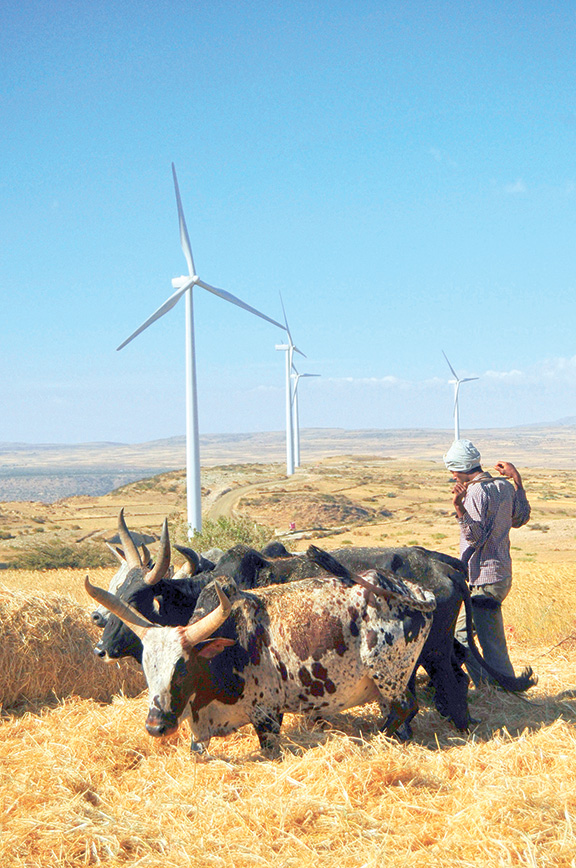AGENCE FRANCE-PRESSE
From the sky, the 84 glimmering white turbines at Ashegoda wind farm shoot up from the ground like huge spokes, standing out high amid vast expanses of yellow wheat.
Ethiopia’s northern Tigray region, mostly populated by cattle farmers who grow the country’s staple grains, is an unlikely site for a modern French-run wind farm, Sub-Saharan Africa’s largest. With its multibillion-dollar projects in wind, hydropower, solar and geothermal energy, Ethiopia’s pioneering green energy efforts aim to supply power to its nearly 94 million people and boost its economy by exporting power to neighboring countries.
“Ethiopia stands alone in Africa as using green energy for transformative growth,” said Ahmed Soliman of the think tank Chatham House.
Current energy production capacity stands at 2,177 megawatts (MW), with ambitions to reach 10,000 MW by 2015.
Ashegoda’s turbines have a total capacity of 120 MW, making it the biggest on the subcontinent. The project was built by France’s Vergnet Group, and it is the first of several planned wind farms in the country.
Ashegoda, 780 kilometers from Addis Ababa, is part of ambitious plans to transform Ethiopia into a middle-income, carbon-neutral country by 2025. The $313 million wind farm, funded by the French government and several private French banks, is an indication of growing interest from European companies in Ethiopia, where Chinese, Indian and Turkish investments also are growing.
The country also wants to be a regional supplier of electricity. Ethiopia is already exporting power to Djibouti and Sudan. A line to transport energy to Kenya is under construction.

